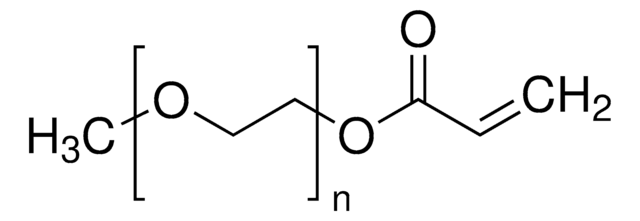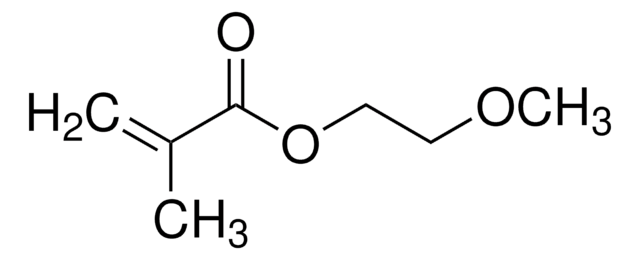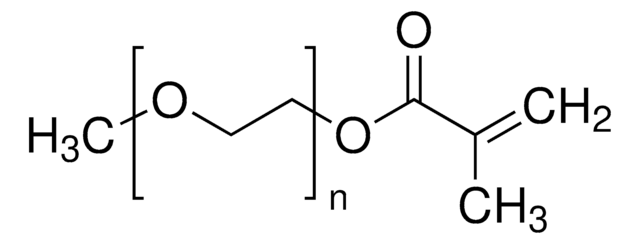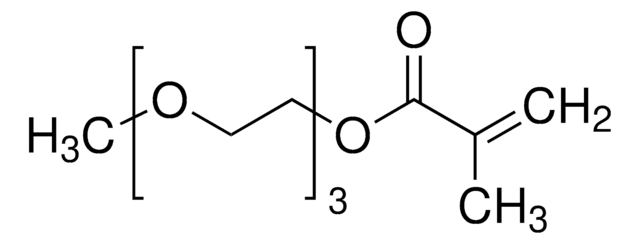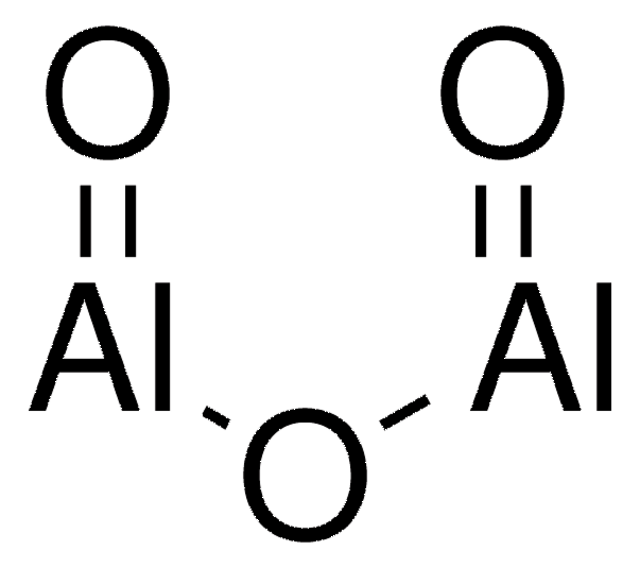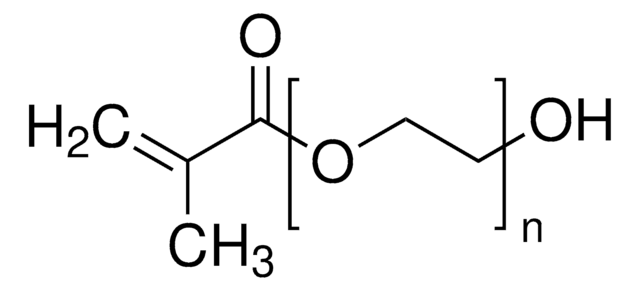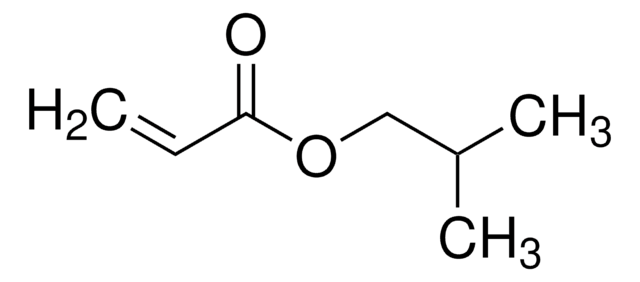408913
Ethylene glycol methyl ether acrylate
contains 50-100 ppm MEHQ as inhibitor, 98%
Synonym(s):
2-Methoxyethyl acrylate
About This Item
Recommended Products
Quality Level
Assay
98%
form
liquid
contains
50-100 ppm MEHQ as inhibitor
refractive index
n20/D 1.427 (lit.)
bp
56 °C/12 mmHg (lit.)
density
1.012 g/mL at 25 °C (lit.)
SMILES string
COCCOC(=O)C=C
InChI
1S/C6H10O3/c1-3-6(7)9-5-4-8-2/h3H,1,4-5H2,2H3
InChI key
HFCUBKYHMMPGBY-UHFFFAOYSA-N
Related Categories
General description
Signal Word
Danger
Hazard Statements
Precautionary Statements
Hazard Classifications
Acute Tox. 3 Dermal - Acute Tox. 3 Inhalation - Acute Tox. 4 Oral - Aquatic Chronic 3 - Eye Dam. 1 - Flam. Liq. 3 - Muta. 2 - Repr. 1B - Skin Corr. 1C - Skin Sens. 1 - STOT RE 2
Supplementary Hazards
Storage Class Code
3 - Flammable liquids
WGK
WGK 3
Flash Point(F)
140.0 °F
Flash Point(C)
60 °C
Personal Protective Equipment
Choose from one of the most recent versions:
Already Own This Product?
Find documentation for the products that you have recently purchased in the Document Library.
Customers Also Viewed
Our team of scientists has experience in all areas of research including Life Science, Material Science, Chemical Synthesis, Chromatography, Analytical and many others.
Contact Technical Service